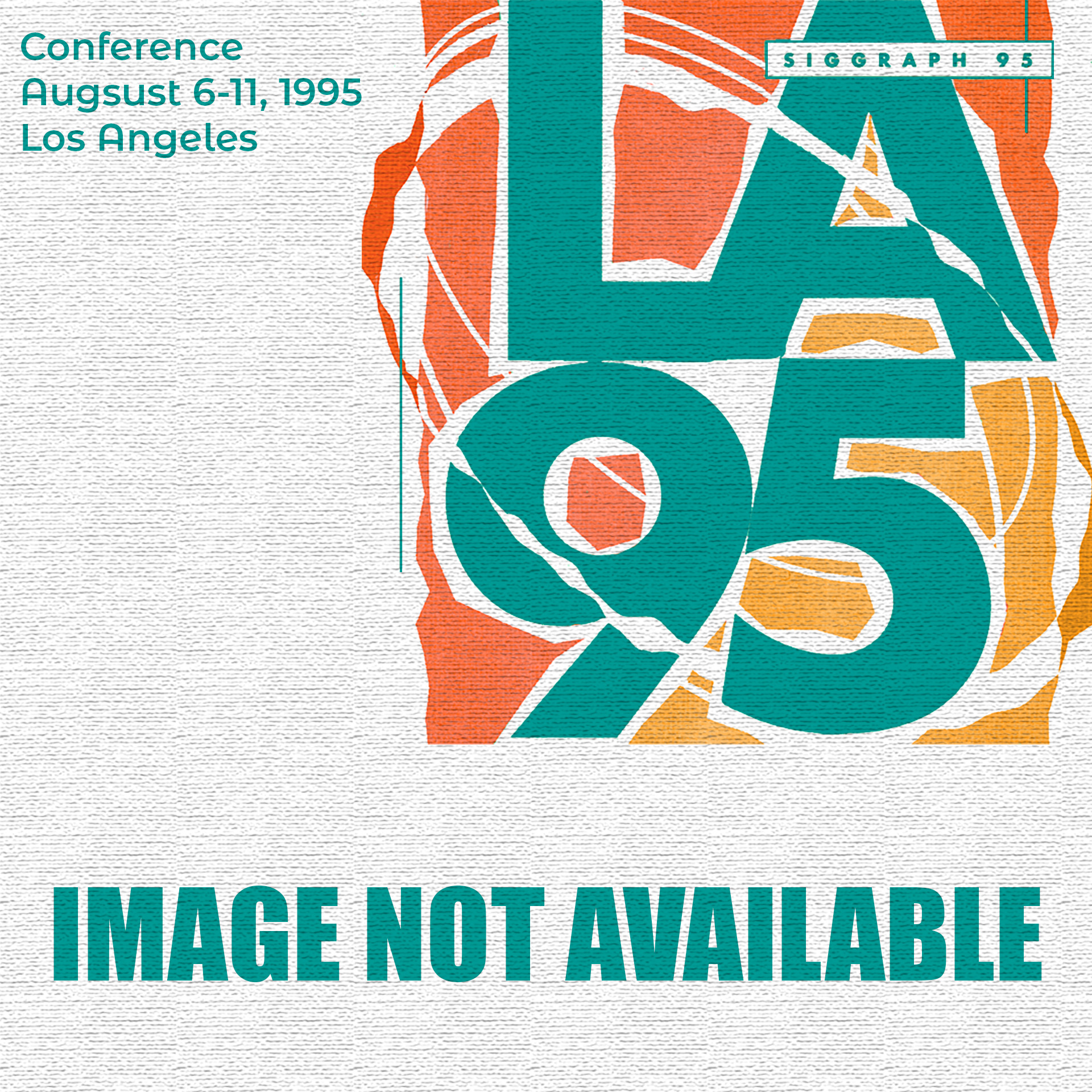“Depicting fire and other gaseous phenomena using diffusion processes” by Stam and Fiume
Conference:
Type(s):
Title:
- Depicting fire and other gaseous phenomena using diffusion processes
Presenter(s)/Author(s):
Abstract:
Developing a visually convincing model of fire, smoke, and other gaseous phenomenas among the most difficult and attractive problems in computer graphics. We have created new methods of animating a wide range of gaseous phenomena, including the particularly subtle problem of modelling “wispy” smoke and steam, using far fewer primitives than before. One significant innovation is the reformulation and solution of the advection-diffusion equation for densities composed of “warped blobs”. These blobs more accurately model the distortions that gases undergo when advected by wind fields. We also introduce a simple model for the flame of a fire and its spread. Lastly, we present an efficient formulation and implementation of global illumination in the presence of gases and fire. Our models are specifically designed to permit a significant degree of user control over the evolution of gaseous phenomena.
References:
1. E Blasi, B. Le Saec, and C. Schlick. “A Rendering Algorithm for Discrete Volume Density Objects”. Computer Graphics Forum, 12(3):201-210, 1993.
2. J. E Blinn. “Light Reflection Functions for Simulation of Clouds and Dusty Surfaces”. ACM Computer Graphics (SIGGRAPH ’82), 16(3):21-29, July 1982.
3. J. D. Buckmaster, editor. Frontiers in Applied Mathematics. The Mathematics of Combustion. SIAM, Philadelphia, 1985.
4. N. Chiba, K. Muraoka, H. Takahashi, and M. Miura. “Twodimensional Visual Simulation of Flames, Smoke and the Spread of Fire”. The Journal of Visualization and Computer Animation, 5:37-53,1994.
5. J. Chomiak. Combustion. A Study in Theory, Fact and Application. Abacus Press/Gordon and Breach Science Publishers, New York, 1990.
6. J. J. Duderstadt and W. R. Martin. Transport Theory. John Wiley and Sons, New York, 1979.
7. D. S. Ebert and R. E. Parent. “Rendering and Animation of Gaseous Phenomena by Combining Fast Volume and Scanline A-buffer Techniques”. ACM Computer Graphics (SIGGRAPH ’90), 24(4):357-366, August 1990.
8. M. Inakage. “A Simple Model of Flames”. In Proceedings of Computer Graphics International 89, pages 71-81. Springer-Verlag, 1989.
9. A. Ishimaru. VOLUME 1. Wave Propagation and Scattering in Random Media. Single Scattering and Transport Theory. Academic Press, New York, 1978.
10. J. T. Kajiya and B. E von Herzen. “Ray Tracing Volume Densities”. ACM Computer Graphics (SIGGRAPH ’84), 18(3):165-174, July 1984.
11. E. Langu6nou, K.Bouatouch, and M.Chelle. Global illumination in presence of participating media with general properties. In Proceedings of the 5th Eurographics Workshop on Rendering, pages 69-85, Darmstadt, Germany, June 1994.
12. M. Levoy. “Efficient Ray Tracing of Volume Data”. ACM Transactions on Computer Graphics, 9(3):245-261, July 1990.
13. J. J. Monaghan. “Why Particle Methods Work”. SlAM Journal of Scientific and Statistical Computing, 3(4):422-433, December 1982.
14. K. Perlin. “An Image Synthesizer”. ACM Computer Graphics (SIG- GRAPH ’85), 19(3):287-296, July 1985.
15. C.H. Perry and R. W. Picard. “Synthesizing Flames andtheir Spread”. SIGGRAPH’ 94 Technical Sketches Notes, July 1994.
16. W. H. Press, B. E Flannery, S. A. Teukolsky, and W. T. Vetterling. Numerical Recipes in C. The Art of Scientific Computing. Cambridge University Press, Cambridge, 1988.
17. W. T. Reeves. “Particle Systems. A Technique for Modeling a Class of Fuzzy Objects”. ACM Computer Graphics (SIGGRAPH ’83), 17(3):359-376, July 1983.
18. H.E. Rushmeier andK. E. Torrance. “The Zonal Method for Calculating Light Intensities in the Presence of a Participating Medium”. ACM Computer Graphics (SIGGRAPH ’87), 21 (4):293-302, July 1987.
19. G. Sakas. “Fast Rendering of Arbitrary Distributed Volume Densities”. In E H. Post and W. Barth, editors, Proceedings of EURO- GRAPHICS ’90, pages 519-530. Elsevier Science Publishers B.V. (North-Holland), September 1990.
20. G. Sakas. “Modeling and Animating Turbulent Gaseous Phenomena Using Spectral Synthesis”. The Visual Computer, 9:200-212,1993.
21. G. Sakas and M. Gerth. “Sampling and Anti-Aliasing of Discrete 3-D Volume Density Textures”. In E H. Post and W. Barth, editors, Proceedings of EUROGRAPHICS ’91, pages 87-102. Elsevier Science Publishers B.V. (North-Holland), September 1991.
22. J. Stam. Forthcoming Ph.D. thesis, Department of Computer Science, University of Toronto, 1995.
23. J. Stam. “Multiple Scattering as a Diffusion Process”. In Proceedings of the 6th Eurographics Workshop on Rendering, Dublin, Ireland, June 1995.
24. J. Stam and E. Fiume. “Turbulent Wind Fields for Gaseous Phenomena”. In Proceedings of SIGGRAPH ’93, pages 369-376. Addison- Wesley Publishing Company, August 1993.
25. J. R. Wallace, K. E. Elmquist, and E. A. Haines. “A Ray Tracing Algorithm for Progressive Radiosity”. ACM Computer Graphics (SIGGRAPH ’89), 23(3):315-324, July 1989.




